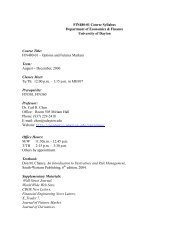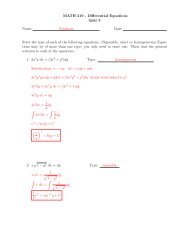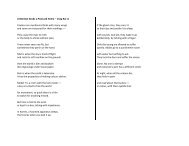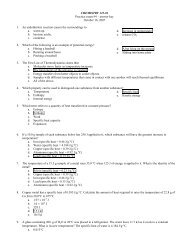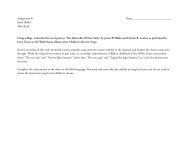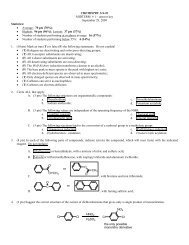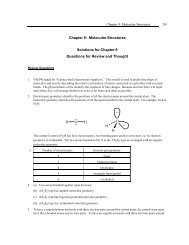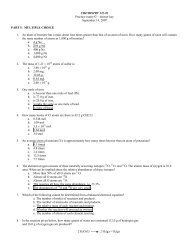Chap 26
Chap 26
Chap 26
Create successful ePaper yourself
Turn your PDF publications into a flip-book with our unique Google optimized e-Paper software.
220 CHAPTER 10<br />
F. Financial Regulation, Deregulation, and Innovation<br />
1. Depository institutions face two types of regulations: deposit insurance and balance sheet<br />
rules.<br />
2. Deposits at banks, S&Ls, savings banks, and credit unions are insured by the Federal<br />
Deposit Insurance Corporation (FDIC).<br />
a) This insurance guarantees deposits of up to $100,000.<br />
b) Banks benefit from deposit insurance because the risk of a bank run is minimized.<br />
c) This guarantee gives depository institutions the incentive to make risky loans because<br />
the depositors believe their funds to be perfectly safe; because of this incentive balance<br />
sheet regulations have been established.<br />
3. There are four main balance sheet rules:<br />
a) Equity capital requirements — regulations setting the minimum amount of the owners’<br />
financial wealth that must be at stake in the depository institution.<br />
b) Reserve requirements — rules listing the minimum percentages of deposits that must be<br />
held in currency or in other safe assets.<br />
c) Deposit rules — restrictions on the type of deposits that an intermediary may accept.<br />
d) Lending rules — restrictions on the type and size of loans that can be made by a<br />
depository institution.<br />
G. Deregulation in the 1980s and 1990s<br />
1. The 1980s were marked by considerable financial deregulation, when federal legislation and<br />
rule changes lifted many of the restrictions on depository institutions, removing many of<br />
the distinctions between banks and others, and strengthening the control of the Federal<br />
Reserve over the system.<br />
2. In 1994 the Riegle-Neal Interstate Banking and Branching Efficiency Act was passed, which<br />
permits U.S. banks to establish branches in any state. It led to a wave of mergers.<br />
H. Financial Innovation<br />
1. The 1980s and 1990s have been marked by financial innovation—the development of<br />
new financial products aimed at lowering the cost of making loans or at raising the return<br />
on lending.<br />
2. Financial innovation occurred for three reasons:<br />
a) The economic environment, especially of the 1980s, featured high inflation and high<br />
interest rates, which created risk for intermediaries. Some innovations, such as variable<br />
rate mortgages, were aimed at lowering this risk.<br />
b) Massive technological change, especially reductions in the cost of computing and longdistance<br />
communication, brought other innovations.<br />
c) Much innovation was directed at avoiding regulation.<br />
I. Deregulation, Innovation, and Money<br />
The combination of deregulation and innovation has produced large changes in the composition<br />
of money, both M1 and M2.<br />
III. How Banks Create Money<br />
A. Reserves: Actual and Required<br />
1. The fraction of a bank’s total deposits held as reserves is the reserve ratio.




